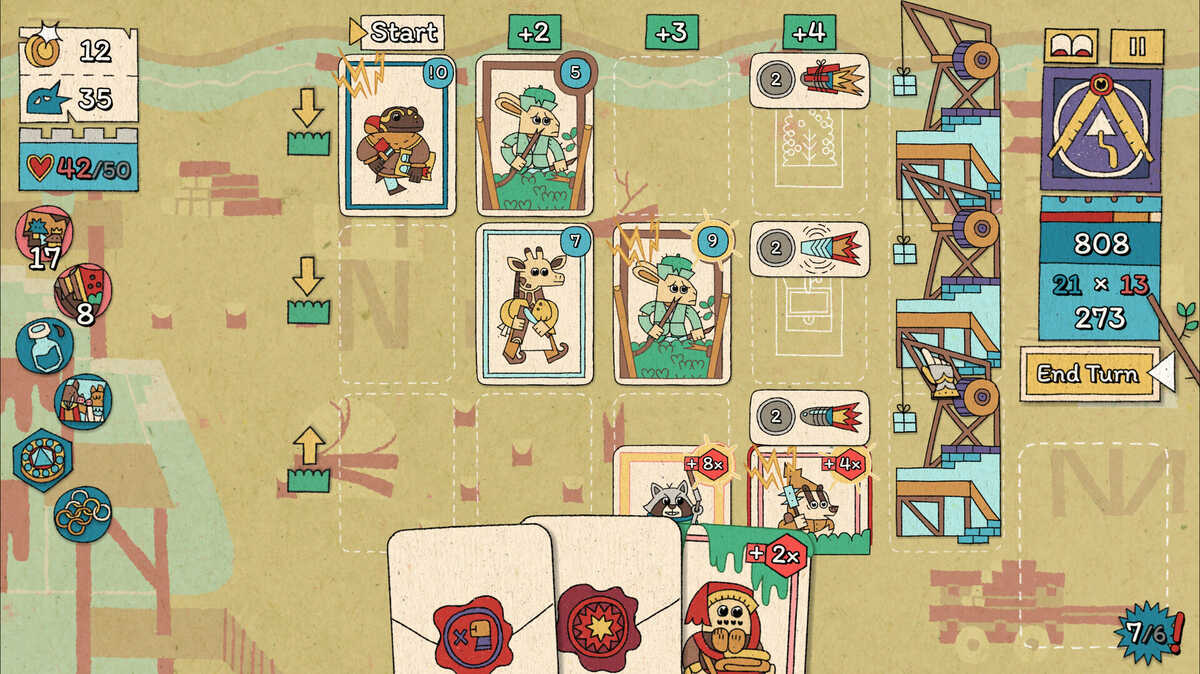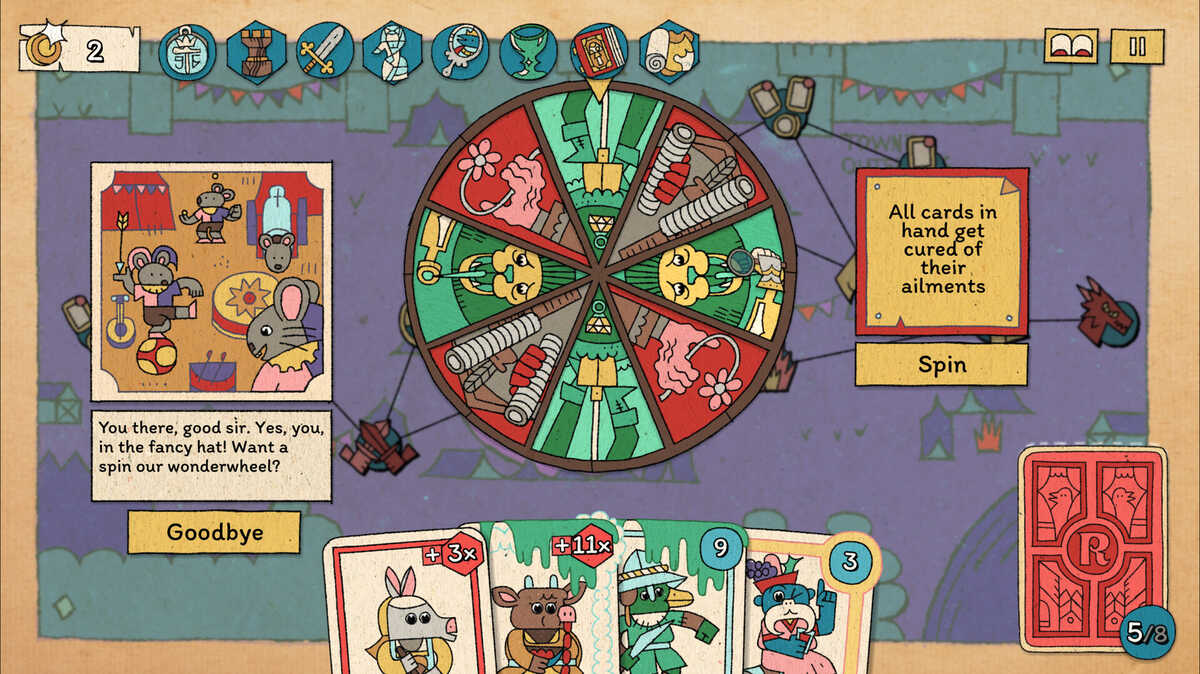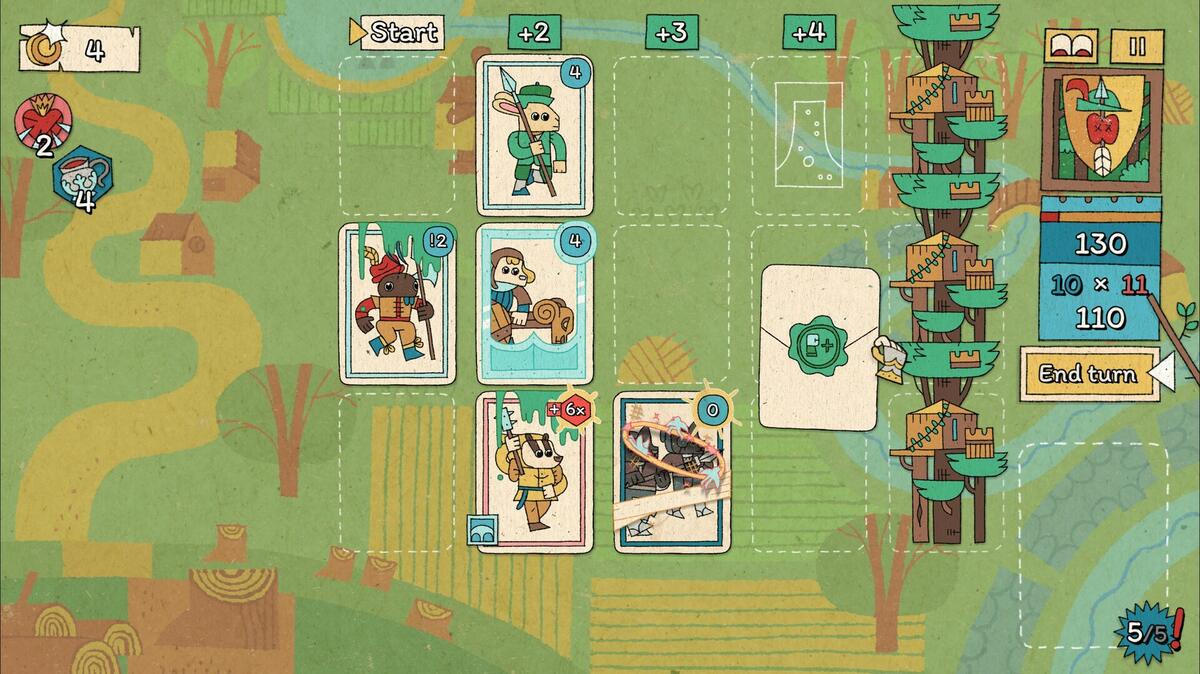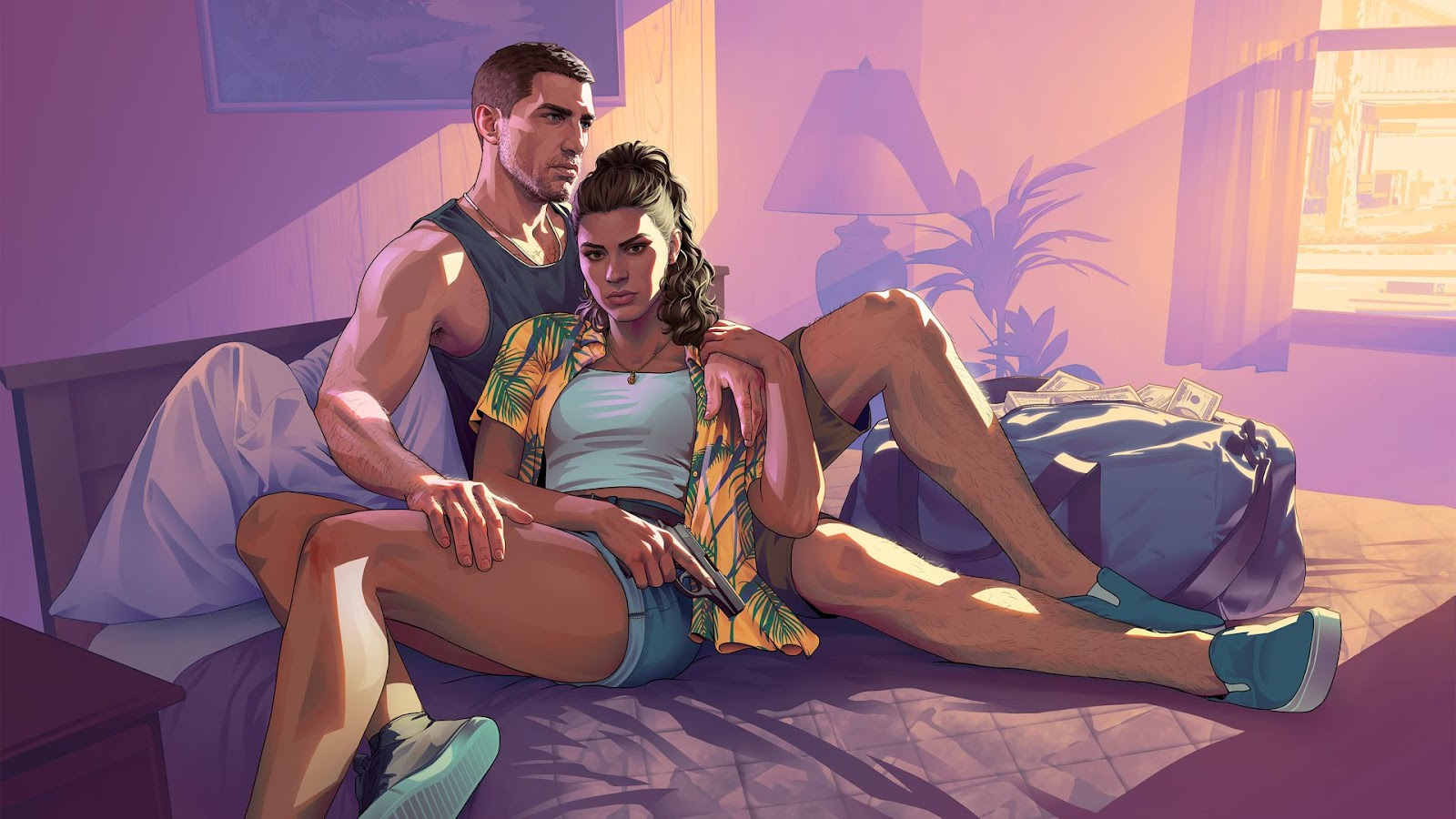You can trust VideoGamer. Our team of gaming experts spend hours testing and reviewing the latest games, to ensure you're reading the most comprehensive guide possible. Rest assured, all imagery and advice is unique and original. Check out how we test and review games here
Amid the sea of roguelike deckbuilders oozing out of Steam’s digital pores at a seemingly uninterruptible pace, The Royal Writ stands out. After quizzing developer Save Sloth Studios, we now understand why: a long list of quirky inspirations and, probably more importantly, an admittedly pedestrian understanding of deckbuilders at the start of development. Sometimes a little distance can go a long way in making a tried-and-tested formula feel surprisingly fresh.
As Save Sloth explains, The Royal Writ took a brisk 15 months to make. It all started after playthroughs of Inscryption and Balatro, which spurred a strong itch to make a deckbuilder. During the Ludum Dare 55 game jam, Save Sloth pieced together an initial working concept. As the studio explains, “We quickly sketched up this idea of cards going sideways and attacking, and that ended up working really fast, and it was fun right out of the gate. We made the jam version in 3 days, and since both we and the other participants really liked the concept, we soon started working on a more fleshed out demo, and then soon after we found Yogscast Games as a publisher, so we quickly started working on the game that you see on Steam now.”
Aside from Balatro and Inscryption, the team’s experience with deckbuilders only encompassed Gwent before development began in earnest. Save Sloth cites this limited knowledge as an advantage, beneficial creative blinkers that allowed them to come up with something different and put their own spin on the classic formula, enough to hopefully pique the interest of players, especially deckbuilder fans.
The Royal Writ is lane-based. You plop down cards on the left, and as you go through turns, they move right, dealing damage as they advance. If they reach the end of the lane, they die permanently. But this can be used strategically to trigger unique card effects, intentional sacrifices for the greater good, as it were. It’s a rather unique spin on the deckbuilder and the facet of the game Save Sloth is most proud of: “We’re proud of both the base concept and the presentation of it, and the fact that we barely had to compromise the idea of the game that we had in mind. We had a fairly tight schedule (self-inflicted), and we had to cut some features that we would’ve liked to include on release, but which would’ve needed a lot more testing, but in the end the game became what we wanted it to be.”
The Royal Writ sidestepping convention doesn’t just extend to gameplay but to its unique visuals as well – part storybook, part dusty medieval codex bathed in bright tones. Worried about veering towards an overused, uninteresting use of the medieval setting, the studio eyed up real-world codex iconography and marginalia, costumes, and period objects to create something “colourful and fun to contrast with the grim, grotesque everyday happenings of a society in the Middle Ages.” The team also looked to Shovel Knight for tone and graphical whimsiness, a reminder that “it’s worth putting the extra effort into little details, even if they are not components of the gameplay itself.”
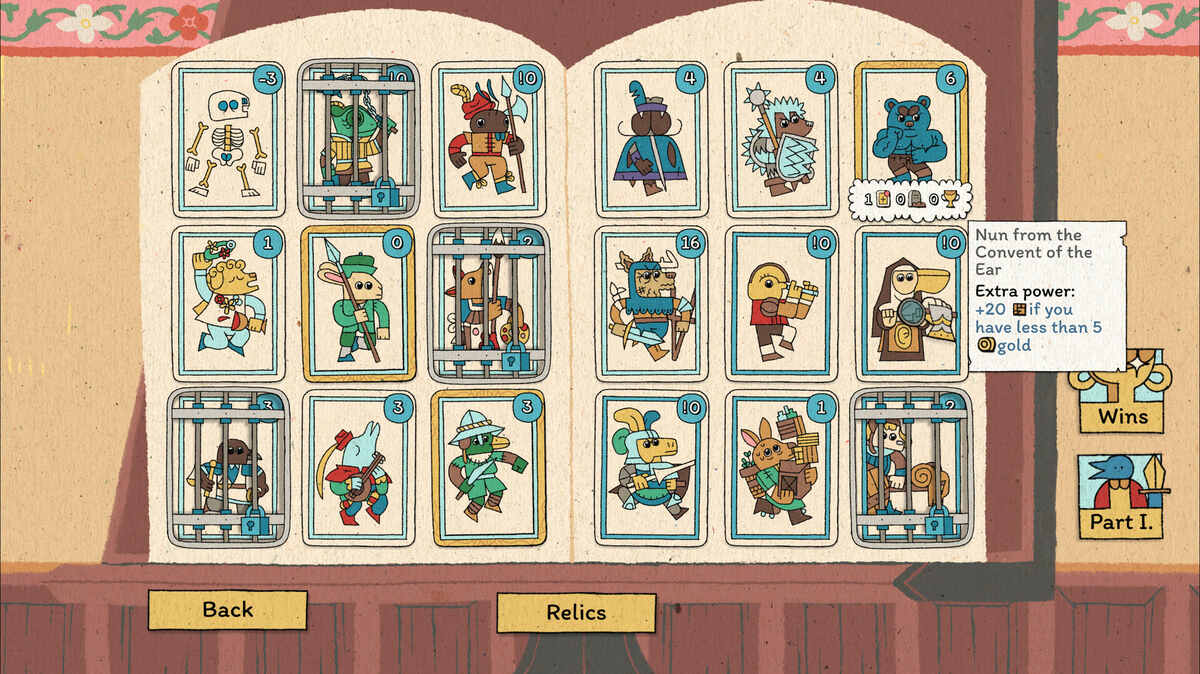
As for the big-headed anthropomorphised animals, the idea came from a curious source: a picture of 16th-century dog armour that serendipitously resurfaced during the game jam and the proportions of the animals found in the long-retired Fabuland Lego sets. Save Sloth explains, “Originally we thought we’d have realistic bunnies in armour, which certainly would’ve been funny, but we decided that this contrast of the cute and the grim works better with this picture book visual. Also, using animals as characters is great, as a lot of them are already associated with certain traits in people’s eyes, so it was fun combining that with the actual game mechanics. This character only moves every second turn? That has to be a sloth! This character likes to be alone? That has to be a lone wolf. Some are more abstract, like the bomb-making opossum, but needless to say, it was really fun to come up with all these animals and their little personalities.”
To bring them to life, Save Sloth opted for traditional frame-by-frame animations for bosses, NPCs, backgrounds, and victory transitions. This partly stemmed from a desire to differentiate the visuals from other deckbuilders. It proved to be one of the more challenging aspects of development. The studio explains that it took a lot of work to create them and insert them into the game, especially in busy scenes, namely those with animals celebrating while walking across the screen.
Like for any deckbuilder and roguelike worth its salt, the balancing of RNG, hazards, relics, and the stats and abilities of each card took on a life of its own. “It was quite difficult (to balance) and we are still not quite sure if everything is perfect, but we’re fairly happy with it now! A lot of the cards had to be redesigned during development, some even getting their abilities completely replaced 3-4 times. It’s really difficult to predict how an ability will behave in the context of the whole game; some interactions still surprise us, but that’s the fun of roguelikes.”
The Royal Writ’s visuals and the addictive one-more-run appeal do a lot of the heavy lifting, but the music brings it all together, again, with a unique spin you wouldn’t expect. Composed and mostly performed by friend of the studio, Narek Papoyan, it’s a joyful mix of inspirations that include Spanish and Hungarian folk music, nuevo tango, and the soundtrack from PS2 rhythm game Gitaroo Man. The best way I can describe it is easy listening with a Romani-Jazz, Django Reinhardt-like twist.
While strong sales and a positive Steam review score wouldn’t go amiss, Save Sloth already sees the game as a success. “After seeing so many people playing with it, enjoying the humour, cursing the exploding opossum or making combos that break the game in ways that we didn’t even think about. Some people even drew fan art of the characters!”, the studio explains.
To wrap thing sup, I always like to prod developers for game recommendations. They typically dredge up niche curiosities you’re unlikely to stumble on yourself. Save Sloth didn’t disappoint and proposed Replicat, a roguelike deckbuilder based on memory-matching games, except that the rules bend and morph in unexpected and game-breaking ways.
